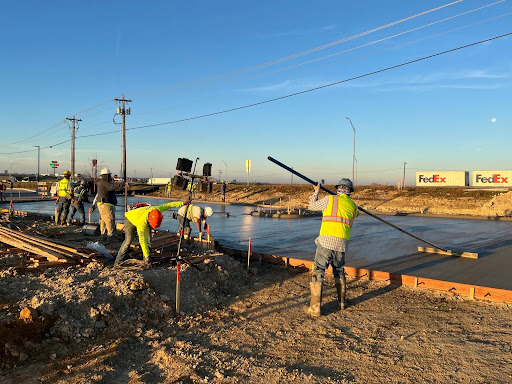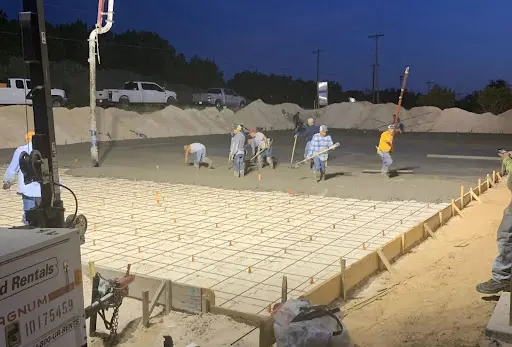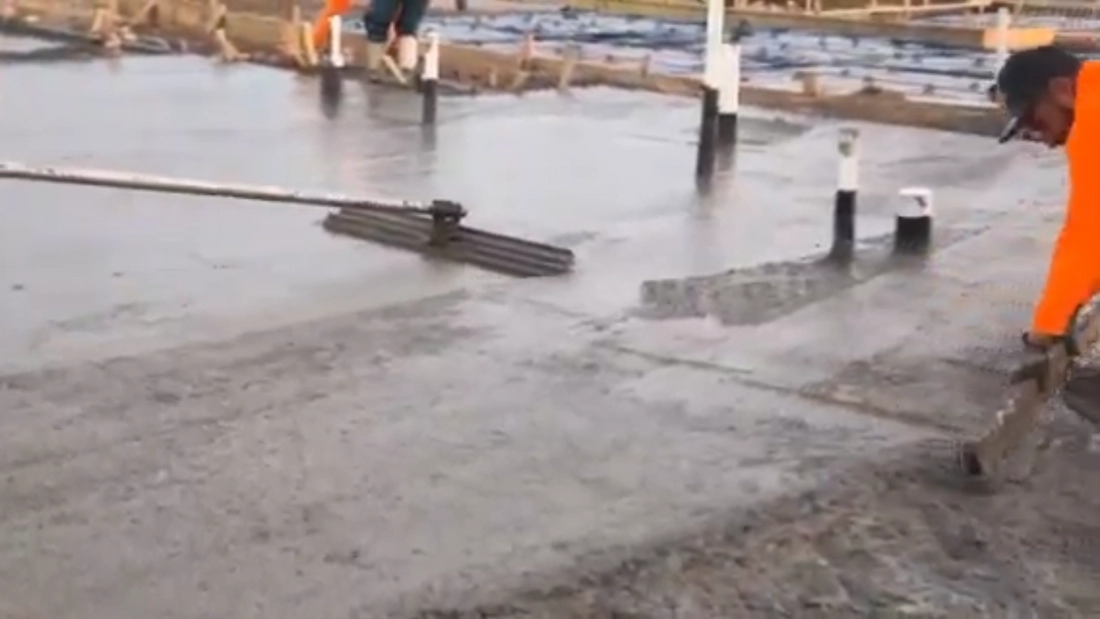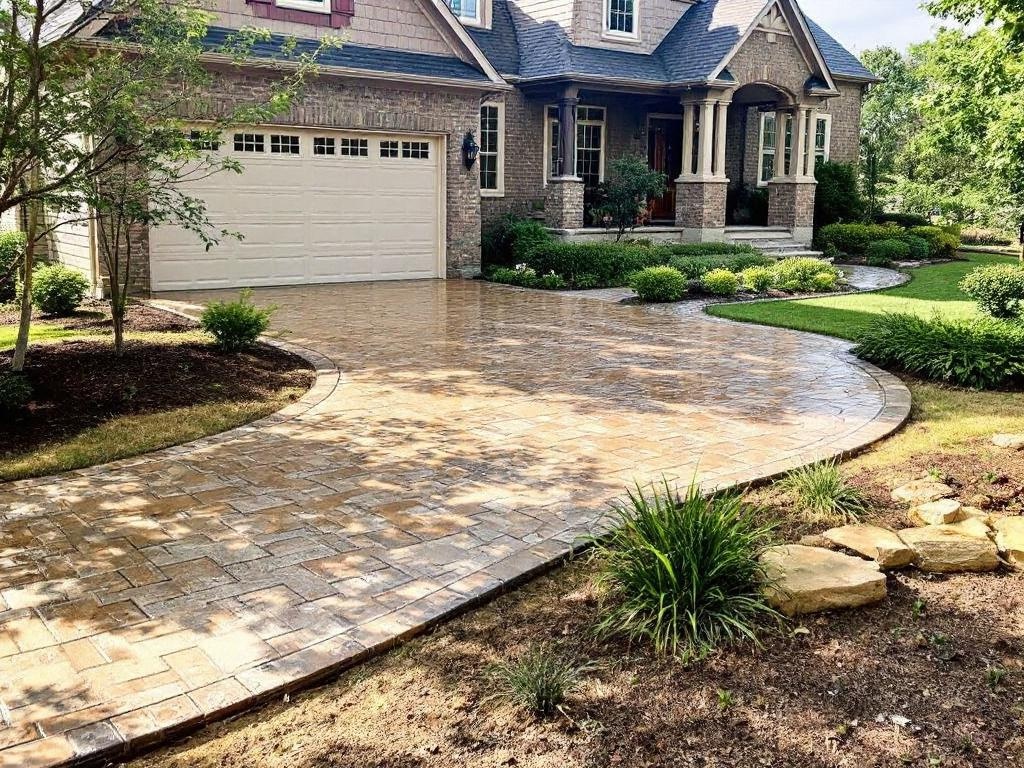
What Is the Best Time of Year to Pour Concrete in North Texas?
Concrete is the foundation of almost every modern structure, literally. From driveways and patios to sidewalks and foundations, it’s a staple in residential construction across Weatherford, Dallas, and Fort Worth, TX. However, while concrete is tough and durable, successfully pouring it requires precise timing, especially in a climate like North Texas.
If you’ve ever asked, “What’s the best time of year to pour concrete in North Texas?”, you’re not alone. Whether you’re a homeowner adding a new driveway or a builder working on a large-scale flatwork installation, knowing when to schedule the pour can significantly impact the quality, durability, and cost.
Let’s dig in.
Why Timing Matters in Concrete Pouring
Pouring concrete isn’t just about mixing cement and water and hoping it dries. Concrete is a chemical process. Once water is added to cement, it starts a reaction called hydration, which is temperature-sensitive. Weather, humidity, wind speed, and even direct sunlight all affect curing time, strength development, and surface finish.
In North Texas, where summers are scorching and winters can surprise you with a cold snap, choosing the right time of year is crucial for long-lasting results.
A Look at the North Texas Climate
Before discussing the ideal season, it’s helpful to understand the climate. North Texas experiences:
Hot, Dry Summers (June–August)
Temperatures regularly exceed 95°F, with extended periods of dryness.
Mild But Unpredictable Winters (December–February)
Occasional freezing, especially overnight.
Pleasant Spring And Fall (March–May And September–November)
Moderate temperatures and lower rainfall (with some exceptions).
According to the American Concrete Institute (ACI), the optimal temperature range for pouring concrete lies between 50°F and 75°F. This range allows the mix to cure evenly without rapid moisture loss or freezing delays.
Pouring Concrete in Each Season: Pros and Cons
Summer (June–August)
Pros
- Concrete cures faster in warm temperatures.
- Low risk of freeze-related delays.
Cons
- High temperatures can cause rapid evaporation, leading to cracks, surface scaling, or weakened structure if not properly managed.
- Early morning or late evening pours are usually required.
- Wind and direct sunlight can accelerate drying and make finishing more challenging.
Best Practices
- Use curing blankets or evaporation retarders.
- Keep the surface moist after pouring.
- Pour before 10 a.m. or after 6 p.m.
Only pour in summer if you’re working with experienced concrete contractors near you who understand proper moisture and timing control, like Rios Brothers Concrete Services.
Winter (December–February)
Pros
- More availability from contractors during the off-season.
- Cooler temps slow the hydration process, giving finishers more working time.
Cons
- Freezing temperatures can ruin a pour before it sets.
- Extra costs may be needed for heating the ground or insulating the mix.
- Shorter daylight hours limit scheduling options.
Best Practices
- Use heated blankets or insulated forms.
- Avoid pouring below 40°F unless precautions are taken.
- Use accelerating admixtures to help the mix set faster.
Riskier, but doable with professional help and the right tools. Generally not ideal for DIY or residential homeowners without guidance.
Spring (March–May)
Pros
- Ideal temperatures for consistent curing.
- Less wind and reduced risk of sudden weather swings.
- Longer daylight hours provide more flexible scheduling options.
Cons
- Rainfall can delay scheduling and affect surface texture.
- Rapid spring weather changes are common in Texas.
Best Practices
- Monitor the weather 48 hours before and after the pour.
- Use plastic sheeting or protective coverings to avoid rain damage.
- Ensure proper drainage at the site.
Spring is one of the best times to pour concrete in North Texas.
Fall (September–November)
Pros
- Similar benefits to spring: moderate temps, low risk of freezing.
- Less rainfall than in the spring.
- Stable climate for consistent curing.
Cons
- As winter approaches, temperatures can drop quickly, especially in November.
Best Practices
- Plan for earlier pours in the season (September/October).
- Still keep an eye on potential cold fronts.
Fall is another prime season to schedule concrete installation.

Concrete Type Matters Too
It’s not just the season, it’s what you’re pouring. Here’s how timing can affect different projects:
| Type of Project | Best Season | Why |
| Driveways | Spring, Fall | Moderate weather avoids cracking risks |
| Patios | Spring, Fall | Cooler temps allow more design flexibility |
| Sidewalks | Spring, Fall | Faster scheduling, consistent curing |
| Foundations | Fall (before winter sets in) | Gives time for framing before deep winter |
| Decorative Flatwork | Spring, Fall | Ideal curing conditions reduce imperfections |
What the Experts Say
The American Concrete Institute (ACI) and Portland Cement Association (PCA) both recommend avoiding extreme temperatures, hot or cold, for flatwork concrete installation. According to ACI 306R guidelines, concrete should not be poured unless ambient temperatures are consistently above 40°F and are rising.
And for every 10°F drop in temperature, hydration slows down dramatically, delaying strength gain and finish timing. That’s why winter pours require additives, ground heating, and sometimes windbreaks or enclosures.
Can You Pour Concrete Year-Round in North Texas?
Technically, yes, but it’s not always ideal. With expert planning, weather monitoring, and the proper curing techniques, professionals can pour in any season. Still, for homeowners or builders looking for fewer variables and long-term durability, spring and fall remain the top choices.
5 Pro Tips for Homeowners Planning a Concrete Project
1. Check The 7-Day Forecast Before Pouring
Avoid rain, freezing temps, or extreme heat.
2. Working With A Local Crew
A Weatherford or Fort Worth-based contractor will be familiar with the regional climate.
3. Ask About Curing Methods
Not all concrete companies near you use proper blankets, sealers, or additives.
4. Don’t Rush The Process
Allow the slab to cure for at least 7 days before placing heavy objects on it.
5. Think Long-Term
The timing affects how your concrete holds up in the years to come.
Why Local Experience Matters
Not all concrete is created equal, and not all contractors are ready for Texas weather. Rios Brothers Concrete Services has years of hands-on experience with flatwork installation throughout Weatherford, Dallas, and Fort Worth. From driveways to patios, we tailor every job to the season, ensuring your project lasts longer and looks better.
When searching for concrete companies near me or concrete contractors near me, ensure you choose one that understands not only how to pour, but also when to pour.

Best Time to Pour Concrete in North Texas
Spring and fall are hands-down the best seasons for concrete work in Weatherford, Dallas, and Fort Worth. They offer ideal curing conditions, fewer weather interruptions, and better outcomes for both residential homeowners and builders.
However, with the proper preparation and an experienced team, you can achieve great results at any time of year.
Ready to Book Your Concrete Project?
Let’s get started. Whether you’re planning a driveway, patio, sidewalk, or full-home flatwork installation, Rios Brothers Concrete Services has the local knowledge and expertise to get the job done right and on time.
Serving Weatherford, Dallas, Fort Worth, and the surrounding North Texas areas.
Get a free quote or ask a seasonal planning question today. Visit www.riosbrothers.com



